COMPUTER CONTROLLED AEROBIC DIGESTER
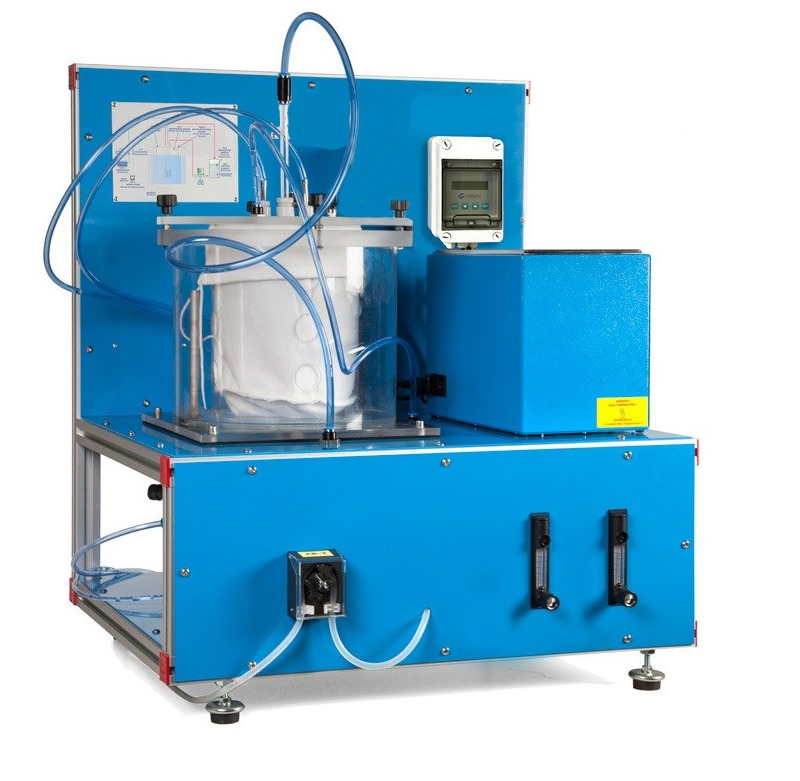
Order Code: 24257521.7
Category: General Lab Equipment V
INTRODUCTION The first step to which residual water is subjected when entering a Sewage Farm is a pretreatment. Big solids, sand and grease are removed. Next, water undergoes the so-called primary treatment. Easily settled suspended ...
SPECIFICATION
INTRODUCTION
-
The first step to which residual water is subjected when entering a Sewage Farm is a pretreatment. Big solids, sand and grease are removed.
-
Next, water undergoes the so-called primary treatment. Easily settled suspended solids and part of the organic matter are removed.
-
The rest of organic matter, dissolved and suspended, and the rest of solid particles that have not been removed in previous treatments are removed by the so-called “Aerobic Wastewater Treatment Biological Processes”, which is the secondary treatment of the water line.
-
The “Aerobic Wastewater Treatment Biological Processes” can be defined as those processes carried out by a specific group of microorganisms that in presence of oxygen act on the dissolved, suspended and colloid organic and inorganic matter existing in wastewater. They transform that matter into gases and cells that can be easily separated by settling.
GENERAL DESCRIPTION
-
The objective of the Computer Controlled Aerobic Digester, “PDAC”, unit is to study and understand aerobic digestion processes and to analyze their main parameters.
-
The unit consists of a 20 l capacity reactor vessel with a tubular membrane made of plastic inside to separate the sludge. Wastewater to be treated enters the vessels pumped by a peristaltic pump.
-
This unit includes a computer controlled thermostatic bath to heat water up to 60 ºC. That water is driven by a pump through a coil inside the reactor. A suitable temperature for the microorganisms population employed in the aerobic digestion will be obtained.
-
The greater amount of oxygen available in the environment in the aerobic digestion, the quicker the bacteria involved in the process will grow. Therefore, a compressor introduces a specific air flow into the reactor through a diffusion plate.
-
The aerobic reactor includes a temperature, pH and dissolved oxygen sensor to monitor the digestion.
-
This Computer Controlled Unit is supplied with the EDIBON Computer Control System (SCADA), and includes: The unit itself + a Control Interface Box + a Data Acquisition Board + Computer Control, Data Acquisition and Data Management Software Packages, for controlling the process and all parameters involved in the process.
COMPLETE TECHNICAL SPECIFICATIONS
With this unit there are several options and possibilities:
- Main items: 1, 2, 3, 4, 5 and 6.
- Optional items: 7, 8, 9 and 10.
Let us describe first the main items (1 to 6):
1. PDAC. Unit:
-
Bench-top unit.
-
Anodized aluminum frame and panels made of painted steel.
-
Main metallic elements made of stainless steel.
-
Diagram in the front panel with distribution of the elements similar to the real one.
-
20 l reactor vessel with a tubular membrane inside.
-
Lid for the reactor with a manual valve and the respective holes.
-
Heating or cooling coil.
-
Thermostatic bath (up to 60 ºC), computer controlled (PID control) : 6 l capacity.
-
Power: 600 W.
-
Temperature sensor “J” type to obtain the temperature in the thermostatic bath.
-
Pump for hot water circulation of the thermostatic bath, computer controlled.
-
Air compressor, range: 0 – 5 l/min, computer controlled.
-
Diffusion plate for the air inlet.
-
Air flow meter, range: 0.4 – 5 l/min.
-
Peristaltic pump, range: 0 – 0.05 l/min, computer controlled.
-
Water flow meter, range: 0.004 – 0.05 l/min.
-
Membrane, muds separation.
-
Overflow for the outlet of filtered water.
-
Valve on the bottom for mud extraction.
-
To monitor the digestion:
-
Temperature sensor.
-
pH sensor.
-
Dissolved oxygen sensor.
-
The complete unit includes as well:
-
Advanced Real-Time SCADA and PID Control.
-
Open Control + Multicontrol + Real-Time Control.
-
Specialized EDIBON Control Software based on LabVIEW.
-
National Instruments Data Acquisition board (250 KS/s, kilo samples per second).
-
Calibration exercises, which are included, teach the user how to calibrate a sensor and the importance of checking the accuracy of the sensors before taking measurements.
-
Projector and/or electronic whiteboard compatibility allows the unit to be explained anddemonstrated to an entire class at one time.
-
Capable of doing applied research, real industrial simulation, training courses, etc.
-
Remote operation and control by the user and remote control for EDIBON technical support, are always included.
-
Totally safe, utilizing 4 safety systems (Mechanical, Electrical, Electronic & Software).
-
Designed and manufactured under several quality standards.
-
Optional ICAI software to create, edit and carry out practical exercises, tests, exams, calculations, etc. Apart from monitoring user's knowledge and progress reached.
-
This unit has been designed for future expansion and integration. A common expansion is the EDIBON Scada-Net (ESN) System which enables multiple students to simultaneously operate many units in a network.
2. PDAC/CIB. Control Interface Box:
-
The Control Interface Box is part of the SCADA system.
-
Control interface box with process diagram in the front panel and with the same distribution that the different elements located in the unit, for an easy understanding by the student.
-
All sensors, with their respective signals, are properly manipulated from -10V. to +10V. computer output.
-
Sensors connectors in the interface have different pines numbers (from 2 to 16), to avoid connection errors.
-
Single cable between the control interface box and computer.
-
The unit control elements are permanently computer controlled, without necessity of changes or connections during the whole process test procedure.
-
Simultaneous visualization in the computer of all parameters involved in the process.
-
Calibration of all sensors involved in the process.
-
Real time curves representation about system responses.
-
Storage of all the process data and results in a file.
-
Graphic representation, in real time, of all the process/system responses.
-
All the actuators’ values can be changed at any time from the keyboard allowing the analysis about curves and responses of the whole process.
-
All the actuators and sensors values and their responses are displayed on only one screen in the computer.
-
Shield and filtered signals to avoid external interferences.
-
Real time PID control with flexibility of modifications from the computer keyboard of the PID parameters, at any moment during the process.
-
Real time PID and on/off control for pumps, compressors, heating elements, control valves, etc.
-
Real time PID control for parameters involved in the process simultaneously.
-
Proportional control, integral control and derivative control, based on the real PID mathematical formula, by changing the values, at any time, of the three control constants (proportional, integral and derivative constants).
-
Open control allowing modifications, at any moment and in real time, of parameters involved in the process simultaneously.
-
Possibility of automatization of the actuators involved in the process.
-
Three safety levels, one mechanical in the unit, another electronic in the control interface and the third one in the control software.
3. DAB. Data Acquisition Board:
-
The Data Acquisition board is part of the SCADA system.
-
PCI Express Data acquisition board (National Instruments) to be placed in a computer slot. Bus PCI Express.
-
Analog input:
-
Number of channels= 16 single-ended or 8 differential. Resolution=16 bits, 1 in 65536.
-
Sampling rate up to: 250 KS/s (kilo samples per second).
-
Input range (V)=±10 V. Data transfers=DMA, interrupts, programmed I/0. DMA channels=6.
-
Analog output:
-
Number of channels=2. Resolution=16 bits, 1 in 65536.
-
Maximum output rate up to: 900 KS/s.
-
Output range (V)=±10 V. Data transfers=DMA, interrupts, programmed I/0.
-
Digital Input/Output:
-
Number of channels=24 inputs/outputs. D0 or DI Sample Clock frequency: 0 to 100 MHz.
-
Timing: Number of Counter/timers=4. Resolution: Counter/timers: 32 bits.
-
The Data Acquisition board model may change at any moment, providing the same or better features than those required for the unit.
4. PDAC/CCSOF. PID Computer Control + Data Acquisition + Data Management Software:
-
The three softwares are part of the SCADA system.
-
Compatible with actual Windows operating systems. Graphic and intuitive simulation of the process in screen. Compatible with the industry standards.
-
Registration and visualization of all process variables in an automatic and simultaneous way.
-
Flexible, open and multicontrol software, developed with actual windows graphic systems, acting simultaneously on all process parameters.
-
Analog and digital PID control.
-
PID menu and set point selection required in the whole work range.
-
Management, processing, comparison and storage of data.
-
Sampling velocity up to 250 KS/s (kilo samples per second).
-
Calibration system for the sensors involved in the process.
-
It allows the registration of the alarms state and the graphic representation in real time.
-
Comparative analysis of the obtained data, after the process and modification of the conditions during the process.
-
Open software, allowing the teacher to modify texts, instructions. Teacher’s and student’s passwords to facilitate the teacher’s control on the student, and allowing the access to different work levels.
-
This unit allows the 30 students of the classroom to visualize simultaneously all the results and the manipulation of the unit, during the process, by using a projector or an electronic whiteboard.
5. Cables and Accessories, for normal operation.
6. Manuals:
-
This unit is supplied with 8 manuals: Required services, Assembly and Installation, Interface and Control software, Starting-up, Safety, Maintenance, Calibration & Practices manuals.
-
References 1 to 6 are the main items: PDAC + PDAC/CIB + DAB + PDAC/CCSOF + Cables and Accessories + Manuals are included in the minimum supply for enabling normal and full operation.

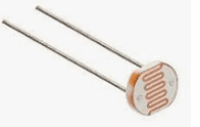
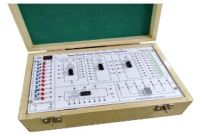
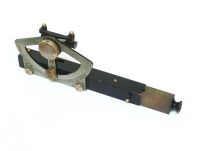
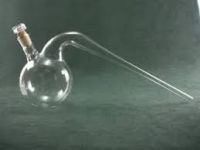
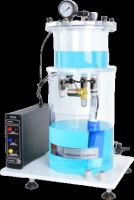
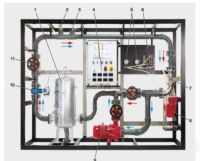
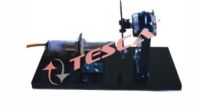
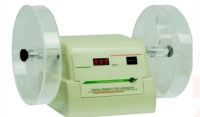
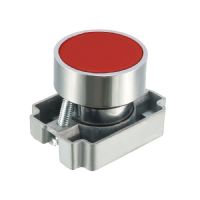

 91-9829132777
91-9829132777